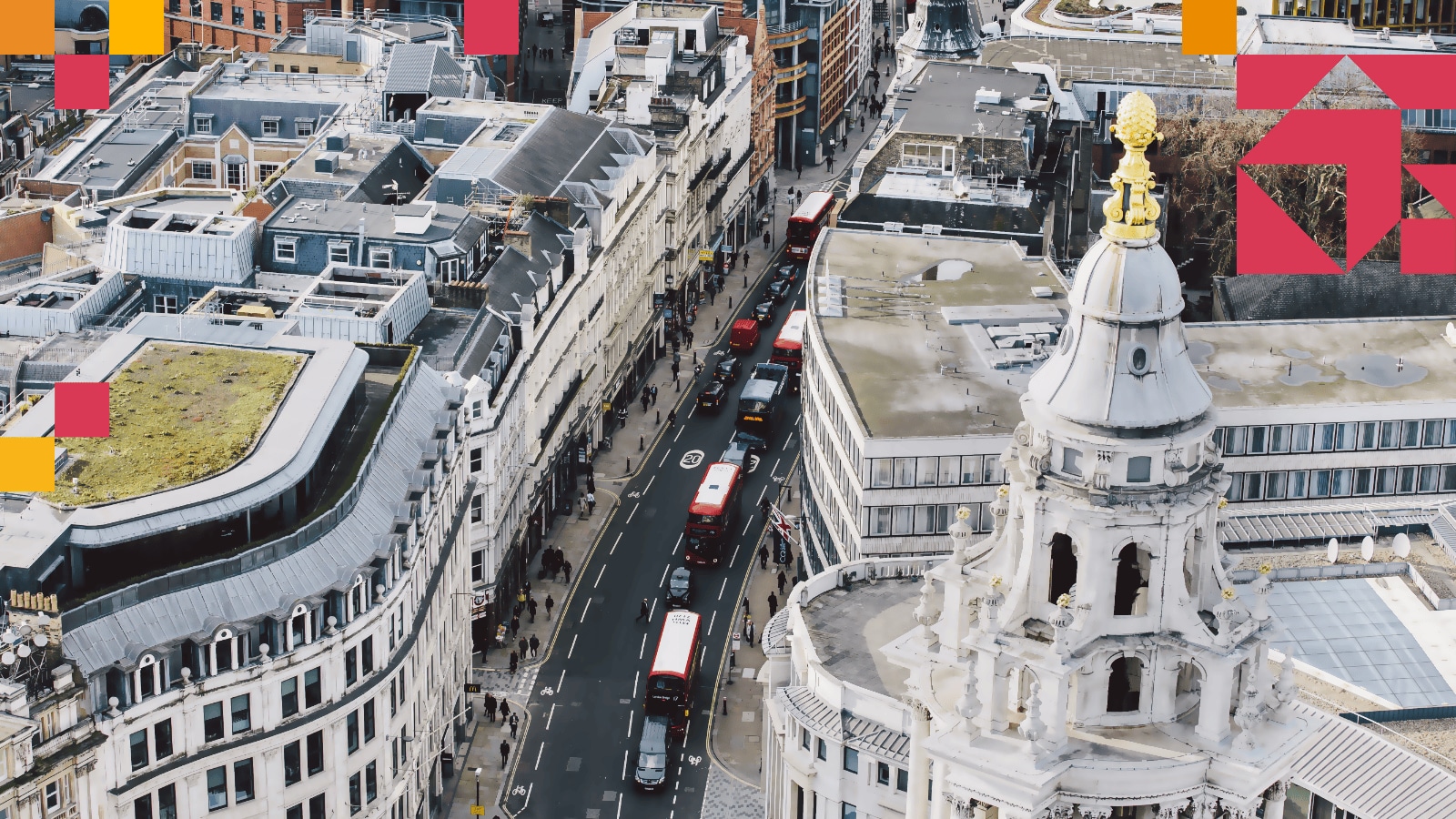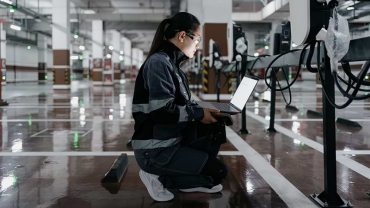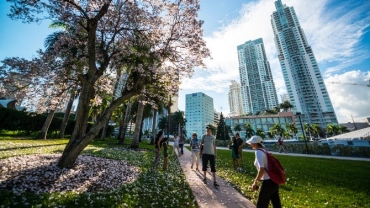
Long term closures are still – and are likely to continue – being driven by the move towards shopping and services like banking being done online, although this has been partially offset by more positive news for hospitality and leisure and on retail parks.
We explore these findings in more detail and look at what they mean for retailers, leisure and service operators in locations across GB.
Jan-Dec openings and closures by year -
- Closures
- Openings
- Net change
What do simultaneously fewer closures and fewer openings mean for the sector?
In 2023, we saw a mixed picture as chain outlet closures increased, partly as a result of some large, one-off restructurings, while openings continued improving on a positive trend. In 2024, while closures decreased, so too did the number of openings as the market starts to balance itself.
A total of 12,804 shops and outlets belonging to multiples and chains (those with five or more outlets) exited UK high streets, shopping centres and retail parks in 2024. This is equivalent to 35 closures per day, a decrease from last year and the second fewest closures in a decade – closures were only lower in 2022.
Openings are following a similar trend, with numbers slowing slightly to 25 per day. This is an improvement from the number of store openings during the pandemic but lower than the 34 per day peak during the mid-2010s.
To understand what simultaneously declining openings and closures means for the high street, we have looked at the long-term performance of our Store Openings and Closures findings over the past ten years.
Performance driven by location more than region
We have seen regional variations all but disappear since the end of the pandemic. This year, the range of regional performance widened slightly. Although there are some outliers in the regions due to the phasing of closures and financial support post pandemic, these have mostly evened out over a two-to-three-year period.
This year’s results show higher net closures in the South and East of the England, while Wales, Scotland and the North West have seen fewer net closures. However, in most cases, this has been a reversal of 2023’s results and not indicative of any specific regional trend. Looking at the long run decline of chain outlet numbers since 2015, every region of the country is within 2 percentage points of the national average.
It’s apparent that catchment area and outlet type is more important than region for success.
In line with last year’s results, retail parks have continued to grow in 2024, significantly outperforming other locations and maintaining the positive performance we explored in our H1 findings. While this appears at first glance to be a post-COVID trend - with shoppers embracing plentiful parking, greater convenience and an increasing variety of outlets - our long-term data shows that this outperformance actually pre-dates the pandemic, with the number of chain retail park outlets only 3% lower than a decade earlier, compared with 25% fewer outlets in shopping centres, and almost 30% fewer on high streets.
Encouragingly though, rates of decline have fallen across all other location types over the last year too. For instance, shopping centres have more than halved the number of closures in 2024, with their recovery being boosted by an increasing pivot to growing leisure categories. Meanwhile even high streets have seen net closures decline by about a quarter compared with 2023.
The relative performance of different location types is a reflection of consumer preferences and footfall patterns. Overall footfall is still 15-20% lower than pre-pandemic but this decline has begun to stabilise across all location types. However, retail parks have consistently been the most resilient type of location, being the best performing location type in all but one month in 2024, outperforming both high streets and shopping centres.
Category success for leisure in addition to grocery and value
Leisure continues to dominate growth categories as it did in 2023. In 2024, leisure accounted for 5 of the top 9 categories, highlighting a long-term trend of consumers looking to prioritise experiences over physical retail.
The fastest growing category this year was convenience stores, as large supermarket chains accelerated growth in the fastest growing store format in the UK grocery market. In fact, the net growth of full-sized supermarkets slowed slightly from the previous year, as discounters in particular slowed down their roll out plans.
Coffee shops were the only other category with more than 1 net opening per week in 2024. This category saw a continuation of openings out-of-town and in drive-thrus that we saw in previous years, as well as chains expanding into city centres as the pandemic working-from-home trend began to reverse.
Value retailers also saw significant growth as established chains opened in mainly ex-Wilko stores, although this is likely to have been a one-off.
When it comes to declining categories, half of all net closures are accounted for by four categories; chemists, pubs and bars, banks, and car-related outlets. This isn’t hugely surprising given that the bottom three categories are predominantly located on the high street as we highlighted in our H1 findings .
Encouragingly, these net declines are generally smaller than those we’ve seen in previous years, reflecting the improving closure trend across the board. It’s also worth taking a closer look at the categories in decline as the reality may be more optimistic than some of the data suggests. The results for chemists, for instance, may be slightly skewed as one of the country’s largest chemist chains went into liquidation in early 2024. In the case of pubs, of the 851 pub closures in 2024, approximately one third became other chains, one third reopened as independents or small chains (and are therefore excluded from these numbers) and only one third are now vacant or being used for other purposes. Results for other categories such as home decor and fashion retailers have mostly been affected by one-off restructurings which are unlikely to repeat in 2025.
In contrast to the categories affected by one-off restructurings, banks and other services continue to be affected by long-term structural decline as transactions shift online; for example, more than half of all bank outlets having closed since 2015. While we have seen this trend over a number of years, the closure rate is now beginning to slow, suggesting the worst of the declines may be over.
Long term closures a result of services rather than just retail
As we saw in 2023, even retail park success is unable to mask the steady net decline in chain outlets over the last few years. Headlines blame this decline on retail, but an even higher number of chain outlet closures have actually been driven by services such as banks, travel agents and estate agents when we look over the past decade.
While services and ‘comparison retail’ (i.e. categories such as fashion, home and electricals, but excluding grocery and leisure outlets) have shown similar levels of decline, and consistently worse than the GB average since 2015, comparison retail chain store closures almost exactly mirror the decline of in-store shopping and the rise of online retail sales. The recovery in in-store sales directly after the pandemic increasingly looks like a reversion to trend, rather than part of a long-term turnaround in the fortunes of high streets.
Looking over the long-run period, this decline in comparison retail outlets is what we would expect, with a c.3% year-on-year decline in store numbers almost perfectly matching a c.3% per annum decline in penetration of in-store sales. Together with the trend of a slower decline in grocery, convenience and leisure chain outlets, this adds up to a 2% per annum decline in overall chain outlets over the past decade.
Moving towards stability and an opportunity to change?
The results for 2024 show improvement. Closures are stabilising with fewer one-off failures and restructurings leading to just 10 net closures per day, three less than in 2023. We’re also seeing closures slow in traditionally faster-declining categories such as fashion, charity shops and betting shops. These falling closure rates could indicate that we’re over the worst of the decline.
However, our long-run analysis does show the 2% per annum decline in chain outlets is in-line with the wider trend of shopping and services continuing to move online, despite the stated preference of many younger consumers to shop in store. We would expect this to continue at least in the medium-term, albeit perhaps at a slightly slower rate, given the steady consumer shift towards online spending and online service transactions. It’s also a decline that we’re seeing nationwide - while there are some regional fluctuations year-on-year, there has been little variation over the last decade. The good news is that closure rates are slowing even for categories in long-term structural decline, such as banks and betting shops.
This year’s data reinforces a continued move away from the high street, where we’re still seeing concentrated closures and slower openings that are unable to offset these closures. In contrast, out-of-town locations are seeing fewer closures and a net increase in store openings, driven by both leisure outlets and larger retailers shifting from high streets to the retail parks because of the greater convenience these locations offer consumers.
And as the number of banks, chemists and pubs on the high street continue to decline, consumers are seeing fewer reasons to visit the high street as often as they did in the past. That’s leading to a reduction in footfall.
So, what does that mean for the high street’s future? In the short term, higher costs following April’s increases in National Living Wage, employer National Insurance contributions and business rates mean we're likely to see an acceleration in closures as marginal locations become unviable for retail and hospitality operators.
In the longer term, high streets must consider how to reverse the footfall trend. Understanding why consumers are increasingly turning to retail parks for shopping and leisure, and how shopping centre operators have slowed down their decline could hold the key. High streets will need to actively look for opportunities to evolve, by understanding how retail parks and shopping centres have appealed to consumers through a combination of convenience of location, curation of their offer and coordination of multiple tenants.
We have seen a notable recovery for shopping centres this year as they pivot to leisure rather than retail. Could high streets follow this lead to increase footfall? And, how can vacant sites on our high streets be regenerated to encourage consumers to come back into towns? Exploring alternative uses for housing, health and education and other local services could provide the much-needed boost that the UK’s high streets need.
Contact us

Leader of Industry for Consumer Markets, PwC United Kingdom
Tel: +44 (0)7850 515966

Jacqueline Windsor
UK Head of Retail and Strategy& Partner, PwC United Kingdom
Tel: +44 (0)7801 074739

Global FDD Leader and Retail, Consumer and Leisure Specialist, PwC United Kingdom
Tel: +44 (0)7802 882562












